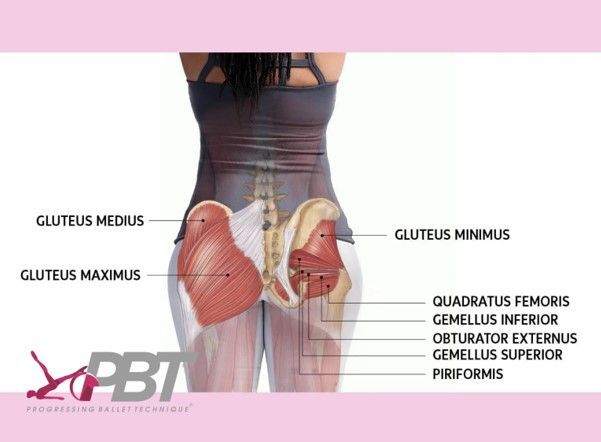In ballet, a widespread misconception revolves around the notion that gripping or excessively engaging the gluteus maximus muscle yields benefits. Priscilla Law, from PBT Asia, sheds light on this fallacy in her insightful blog post. Discover why gripping the gluteus maximus muscle is ill-advised in ballet technique, and gain valuable tips on enhancing your turnout while preserving proper body alignment and function

Understanding the Gluteus Muscles: The gluteus muscles, including the gluteus maximus, gluteus medius, and gluteus minimus, play crucial roles in ballet movements such as hip extension, rotation, and abduction. They provide stability and power to the body while executing various dance steps. Gripping the gluteal muscles to enhance turnout might seem logical, but it can lead to long-term issues, including tension and reduced range of motion.
The Misconceptions of Gripping: Let's address the three main reasons dancers tend to grip their gluteus muscles and why it is important to break free from this habit:
- Pelvic Floor Weakness: The pelvic floor is a part of the core muscle system, responsible for stabilizing the spine and the entire body. When the pelvic floor is weak, dancers may compensate by over-gripping the gluteal muscles to create a sense of stability. However, this compensatory action only masks the underlying weakness and can hinder proper alignment and movement.
- Posterior Hip Weakness: The gluteus maximus, being the largest and strongest muscle in the body, plays a significant role in maintaining upright posture, propelling the body forward, and providing support to the back and knees. If the gluteus maximus is weak, dancers may instinctively grip the hips to compensate for the lack of stability. However, this gripping inhibits the natural movement and engagement of the gluteal muscles, ultimately hindering their strength development.
- Posture and Aesthetics: Many dancers are taught to maintain good posture by pulling in the stomach and tucking the buttocks. This often leads to squeezing the gluteal muscles excessively, creating a flattened and elongated appearance in the posterior. Unfortunately, this aesthetic ideal can contribute to low back pain and disrupt the body's natural alignment.
Breaking Free from Gluteal Gripping: To improve your technique and overall movement quality, it is crucial to let go of the habit of gripping the gluteus maximus muscle. Here are three essential steps to help you achieve that:
- Develop Awareness: Begin by becoming aware of your pelvic position. Visualize your pelvis as a bowl suspended over your feet, with the sit bones lifted and aligned above the heels. Find a neutral pelvis position that allows for optimal alignment and freedom of movement.
- Activate the Core: Proper core activation is key to releasing unnecessary tension in the gluteal muscles. Focus on diaphragmatic breathing and engage the deep core muscles, such as the transverse abdominis and pelvic floor, to stabilize the spine and support the body. This will reduce the reliance on gripping the gluteus maximus for stability.
- Learn Proper Movement and Exercise Techniques: Seek guidance from ballet instructors or movement specialists who can teach you proper movement and exercise techniques for hip and core activation. By understanding how to use these muscles effectively, you can enhance your turnout and overall dance performance without relying on gluteal gripping.
In ballet, gripping the gluteus maximus muscle is a misconception that can impede progress and increase the risk of injury. Dancers can unlock their hips and achieve by understanding the importance of releasing unnecessary tension in the gluteal muscles and focusing on proper alignment and core engagement.

